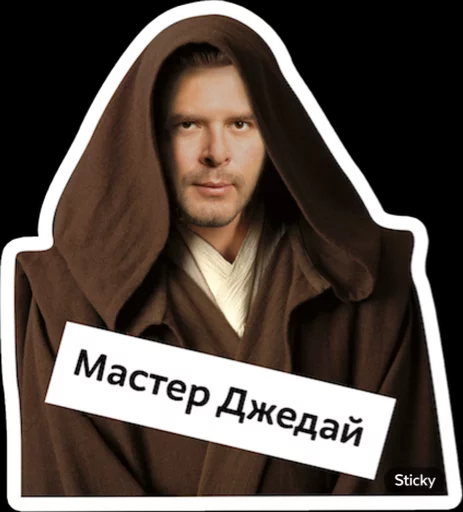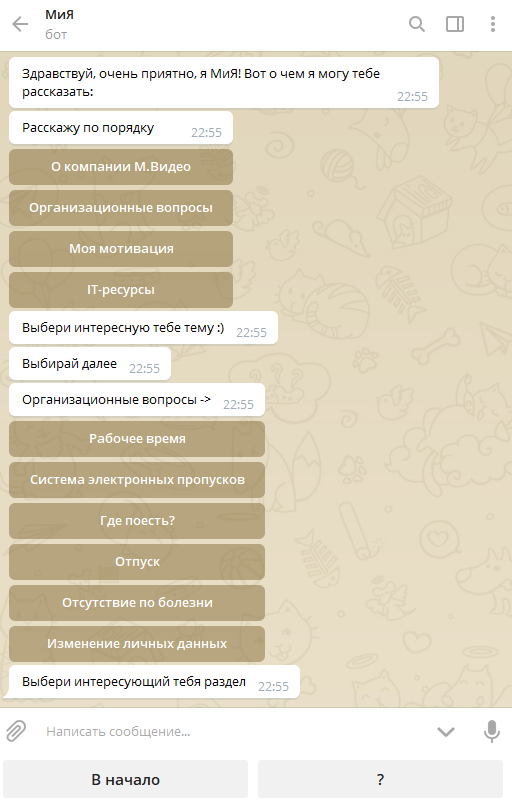Telegram as corporate standard
Effective team communication is like good roads in the country: without them, only on three-wheeled carts for three months from Moscow to St. Petersburg, and not to build a strong economy. And, if there are no convenient communication tools in the team, such a team will be difficult and inefficient. We in IT also have communication difficulties. When you need someone to write, you do not know where to go: someone prefers mail, someone has Viber, someone has WhatsApp, someone has Facebook Messenger. We have to spend a lot of time just to figure out how best to contact a person, not to mention the use of the zoo channels. Moreover, without well-established communications, overhead costs grow when working remotely by employees. And a few months ago, I realized
When there are processes in a company, the system lives, people communicate, problems are solved. No need to approach and stand over the soul to understand what is being done there. All you have to do is look in the chat and see which questions are raised, which of them are solved, and which are not, ask questions yourself, if you need to get a quick answer. Of course, such a scheme is convenient if there are not so many employees, otherwise a chat of 50 or more participants turns into chaos. We have a large IT department and decided to test the idea on a smaller team - the E-commerce Systems Department. Then I began to search the network for information on how people choose corporate communication tools, including for large IT companies, but I didn’t find anything sensible: neither detailed comparative reviews / tests of various instant messengers, nor well thought out selection criteria. I came across only voluminous, full of "water" articles on why you chose a particular product. I also did not find practical advice on how best to popularize the selected messenger in a team or company.
I had to invent.
At first we started with the choice of the messenger. We analyzed the options, chose several popular ones, and then made a survey for all employees to understand what they like more and why. I wanted to make a sensible, reasoned choice, and not just to poke a finger, because I so want or familiar.
I must say that now the company has an “official” messenger - WhatsApp. But according to the survey results, NO ONE wanted to use it. Yes, it is for the better, because it’s bad with integration: WhatsApp will not be able to tie to Jenkins or Jira. Three messengers reached the finalists:
It's funny that representatives of different professions showed certain preferences:

We even considered the option of using not one, but all three messengers, distributing them to different target audiences. But as a result they stopped at Telegram. Its main advantage is integrabilityand stickers : Telegram can be built into our technological processes with minimal effort, namely:
We really liked the stickers. We decided to popularize the messenger using gamification, and the stickers were suitable for this as well as possible. Instead of printing old school letters and other attributes, the idea was to organize chat rooms in Telegram, invite all the necessary people, including contractors, to reward them with specially designed personal stickers. So it was possible to identify certain employees, publicly explain why they received their stickers, and involve even more people in communication via Telegram.
I do not know any other way how to gather in the single information space all IT employees, especially participants of geographically dispersed teams. And to collect it not in the form of an order, namely to inspire, to interest the team with a single tool for everyone to communicate.
Of course, the idea was not without flaws, but it worked: people liked the idea with personal stickers, and Telegram itself. We took the Star Wars universe as the stylistic basis for the first series of premium stickers - at the end of December there was a HYIP around the new series. And the stickers themselves were issued to the winners in different nominations.








You will say that stickers alone are not enough to lure people into the messenger? And you will be right. Therefore, we also screwed a corporate chat bot named Miya (M.Video and I). It helps all newcomers to get used to the company: it will prompt the addresses of corporate portals, how to get to the cafe and give answers to other relevant questions. Mia can answer both through the tree menu and through natural correspondence.

Mission was created on the platform API.AI. This is a Russian project that Google bought in 2016. The bot is cross-platform, it can be used both in Skype, and in ordinary chat, and in the browser, but for now we have launched it only in Telegram.
Now the situation with communications is much better than six months ago. We have internal forums, chats on different systems and topics. Perhaps we will make some thematic areas on innovations in e-commerce and some kind of HYIP topics like IoT, AI, blockchain, etc.
Stickers in Telegram have proven themselves well, we will develop this tool. We will have our own exclusive set of stickers, which people will not only be able to distribute to Telegram, insert it into the signature in the corporate mail or avatar in the contacts directory, it will also be printed as a sticker, for example, on a laptop.
Further in our plans - integration with various working tools, but about it in the following article.
When there are processes in a company, the system lives, people communicate, problems are solved. No need to approach and stand over the soul to understand what is being done there. All you have to do is look in the chat and see which questions are raised, which of them are solved, and which are not, ask questions yourself, if you need to get a quick answer. Of course, such a scheme is convenient if there are not so many employees, otherwise a chat of 50 or more participants turns into chaos. We have a large IT department and decided to test the idea on a smaller team - the E-commerce Systems Department. Then I began to search the network for information on how people choose corporate communication tools, including for large IT companies, but I didn’t find anything sensible: neither detailed comparative reviews / tests of various instant messengers, nor well thought out selection criteria. I came across only voluminous, full of "water" articles on why you chose a particular product. I also did not find practical advice on how best to popularize the selected messenger in a team or company.
I had to invent.
At first we started with the choice of the messenger. We analyzed the options, chose several popular ones, and then made a survey for all employees to understand what they like more and why. I wanted to make a sensible, reasoned choice, and not just to poke a finger, because I so want or familiar.
I must say that now the company has an “official” messenger - WhatsApp. But according to the survey results, NO ONE wanted to use it. Yes, it is for the better, because it’s bad with integration: WhatsApp will not be able to tie to Jenkins or Jira. Three messengers reached the finalists:
- Skype . In principle, free. The most common instant messenger, which is already one of the corporate standards in many companies. Its advantages are conference video calls and desktop sharing. But many noted the unstable quality of communication and battery-eating mobile application.
- Slack . Paid, and you need to buy a license
for each user. Mobile client is light and fast, and the
messenger itself was created specifically for development teams. There are so many useful integrations, for example, with BITbucket Server and JIRA. There is a function of demonstrating the desktop. - Telegram . Free, fast, there are many clients on different platforms, does not require investments. Works well even with a bad channel. Well protected, stable, convenient interface, API for integrations.
It's funny that representatives of different professions showed certain preferences:

We even considered the option of using not one, but all three messengers, distributing them to different target audiences. But as a result they stopped at Telegram. Its main advantage is integrability
Corporate Darth Vader and Han Solo
We really liked the stickers. We decided to popularize the messenger using gamification, and the stickers were suitable for this as well as possible. Instead of printing old school letters and other attributes, the idea was to organize chat rooms in Telegram, invite all the necessary people, including contractors, to reward them with specially designed personal stickers. So it was possible to identify certain employees, publicly explain why they received their stickers, and involve even more people in communication via Telegram.
I do not know any other way how to gather in the single information space all IT employees, especially participants of geographically dispersed teams. And to collect it not in the form of an order, namely to inspire, to interest the team with a single tool for everyone to communicate.
Of course, the idea was not without flaws, but it worked: people liked the idea with personal stickers, and Telegram itself. We took the Star Wars universe as the stylistic basis for the first series of premium stickers - at the end of December there was a HYIP around the new series. And the stickers themselves were issued to the winners in different nominations.








A girl named MIA
You will say that stickers alone are not enough to lure people into the messenger? And you will be right. Therefore, we also screwed a corporate chat bot named Miya (M.Video and I). It helps all newcomers to get used to the company: it will prompt the addresses of corporate portals, how to get to the cafe and give answers to other relevant questions. Mia can answer both through the tree menu and through natural correspondence.

Mission was created on the platform API.AI. This is a Russian project that Google bought in 2016. The bot is cross-platform, it can be used both in Skype, and in ordinary chat, and in the browser, but for now we have launched it only in Telegram.
Future plans
Now the situation with communications is much better than six months ago. We have internal forums, chats on different systems and topics. Perhaps we will make some thematic areas on innovations in e-commerce and some kind of HYIP topics like IoT, AI, blockchain, etc.
Stickers in Telegram have proven themselves well, we will develop this tool. We will have our own exclusive set of stickers, which people will not only be able to distribute to Telegram, insert it into the signature in the corporate mail or avatar in the contacts directory, it will also be printed as a sticker, for example, on a laptop.
Further in our plans - integration with various working tools, but about it in the following article.
